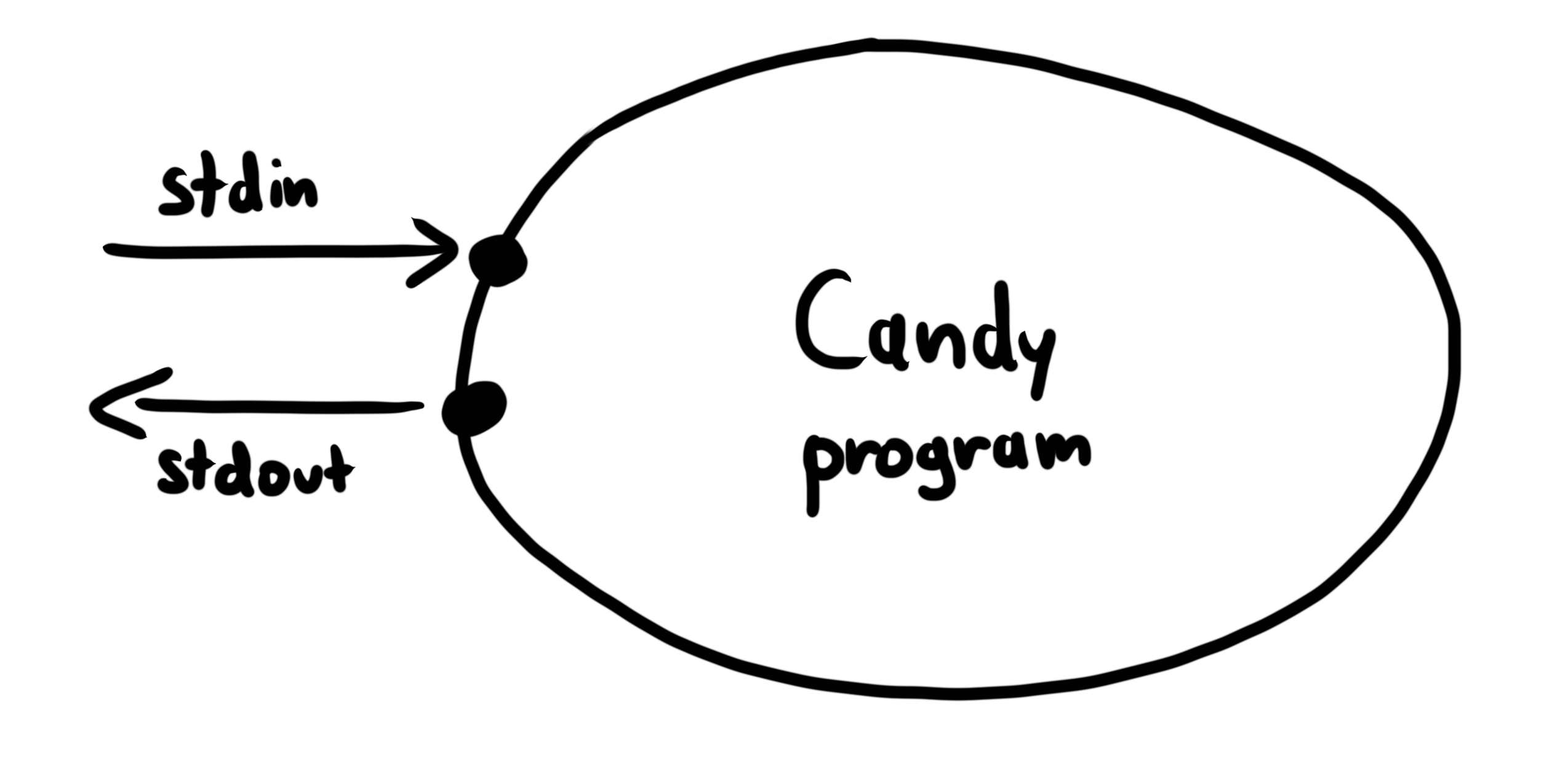Goodbye, Fibers!
Why Candy doesn't have built-in concurrency anymore
Until recently, we supported primitives for structured concurrency in our programming language Candy. You can find the details about the design and implementation in the last article, but the short version is that there were built-in functions for operations such as starting multiple parallel execution threads.
We compile Candy code into bytecode for our VM. Recently, Clemens started working on an LLVM backend as an alternative. As part of that, we started thinking more about how Candy interacts with the platform it runs on.
How Candy Interacted With The World Until Now
Until now, Candy code interacts with the environment using channels. For example, the

Inside your program, many fibers can run concurrently. Implementing fibers was pretty fun – an exciting challenge that took me some time to figure out.
But why do we work on Candy in the first place? We want to provide amazing tooling using fuzzing. Our main goal is to explore this unique aspect of Candy. Built-in concurrency can be a cool language feature, but it's not what makes Candy special.
To get back to the point: Clemens started working on an LLVM backend. As it turns out, having concurrency primitives in the language makes implementing a runtime much more complicated. When you're compiling to machine code, adding support for multiple execution threads is difficult – it's certainly possible, but it introduces lots of complexity. To streamline Candy development, we decided to narrow its scope and removed fibers and channels in favor of handles.
Handles
Handles are a new kind of Candy value that can't be created in Candy code. Instead, the environment passes handles to the main function. To Candy code, handles are indistinguishable from functions –
Now,

What Also Improved
Removing concurrency from Candy had another upside: Code is deterministic. Before, it was deterministic most of the time, but you could construct undeterministic programs if you really wanted to:
[ channel , parallel , async ] = use "Core"
flipCoin = {
c = channel . create 2
parallel { nursery ->
nursery | async { c | channel . send Heads }
nursery | async { c | channel . send Tails }
}
c | channel . receive
}
In this case, the program enters a parallel section and creates two fibers. On of them adds
Being a functional language, Candy expects functions to be deterministic. In particular, if a function is called, it may be evaluated at compile-time. Our concurrency primitives broke that assumption.
With handles, that story is a lot clearer: Optimizations can do anything to the code as long as the handles given to the main function are called in the same order and with the same values.